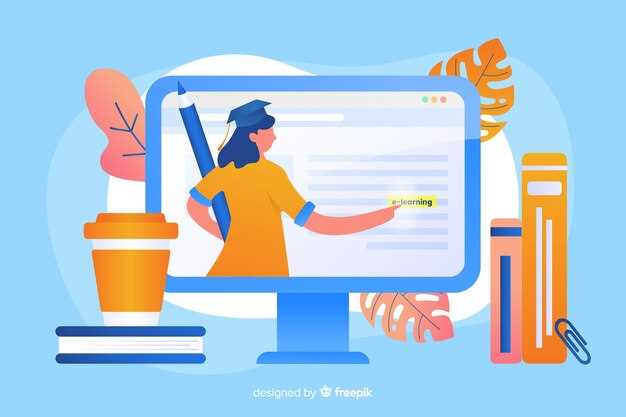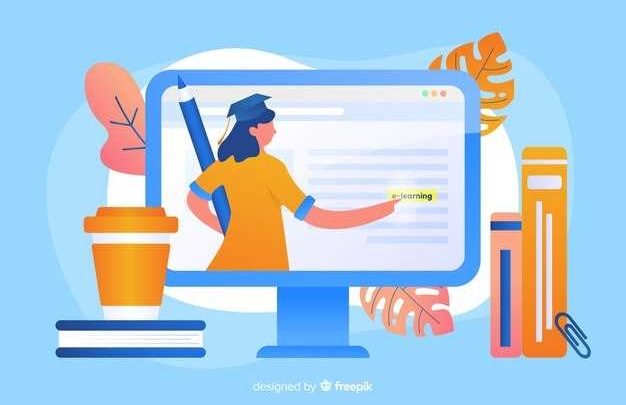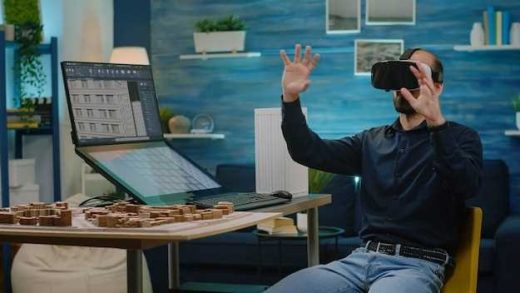
Education today is constantly evolving to keep up with the fast-paced digital world. As educators strive to deliver a more engaging and interactive learning experience, innovative approaches are being explored to capture students’ attention and enhance their understanding of difficult concepts. One such approach that has captured the imagination of educators worldwide is the integration of animation into the educational curriculum.
Unleashing the power of visual storytelling
Through the use of animation, educators can harness the power of visual storytelling to bring complex subjects to life. By presenting information in a visually appealing and dynamic manner, students are more likely to stay captivated and retain a deeper understanding of the material. Whether it’s anthropomorphized characters explaining scientific theories or historical events unfolding in captivating detail, animation has the unique capability to simplify complex concepts and make them accessible to learners of all ages and backgrounds.
Triggering imagination and creativity
Animated content in education goes beyond the simple transmission of information; it stimulates the imagination and encourages creative thinking. By presenting content in an aesthetically pleasing and visually stimulating manner, animations can spark the curiosity of students, leading them to explore the topic further. The combination of vibrant colors, captivating visuals, and compelling narratives provides a fertile ground for students to think critically, analyze ideas, and develop their own unique perspectives.
Appealing to diverse learning styles
Every student learns differently, and traditional teaching methods may not always cater to the needs of all learners. Animation bridges this gap by catering to a variety of learning styles. Visual learners can benefit from the rich and interactive visuals, while auditory learners can absorb information through accompanying narration or dialogue. Moreover, kinesthetic learners can engage with the material through interactive animations that encourage hands-on exploration. By embracing animation as an educational tool, educators can create a more inclusive and holistic learning environment where students of all learning styles can thrive.
The Power of Animation: Captivating Students and Enhancing Understanding
In the realm of modern education, there exists a captivating and transformative tool that has the potential to revolutionize the way students learn and understand complex concepts. This tool, often accompanied by vibrant visuals and dynamic storytelling, carries the power to engage minds, foster curiosity, and promote deeper comprehension. This transformative tool is none other than the captivating world of animated content.
Unleashing Immersive Learning Experiences
Animations possess the ability to transport students into mesmerizing worlds where ideas come to life. Through the blend of captivating visuals, well-crafted narratives, and expertly designed characters, these animated content pieces captivate students’ imagination and effortlessly immerse them in the subject matter they are exploring. This immersive learning experience breaks down the barriers of traditional teaching methods, allowing for a truly engaging and interactive educational journey.
Enhancing Comprehension and Retention
One of the remarkable strengths of animated content lies in its ability to enhance students’ understanding and retention of information. By presenting concepts in a visually appealing manner, animation empowers learners to grasp complex ideas more easily. This dynamic visual representation aids in the formation of mental connections and helps students retain information for longer periods. Furthermore, animations often utilize creative storytelling techniques, making abstract or intimidating concepts more relatable and accessible to students of all backgrounds, fostering a deeper understanding and connection to the material.
Overall, the power of animation in education goes far beyond just capturing attention. It serves as a dynamic tool that captivates students, enhances their understanding, and fosters a love for learning. Whether it’s in science, history, or any other subject, the creative and immersive capabilities of animated content have the potential to revolutionize education and create a more engaging and effective learning experience for all students.
Incorporating Animation into the Classroom: Benefits and Best Practices
Exploring the integration of dynamic visuals in educational settings can lead to numerous advantages for both educators and students. By incorporating animated content into the classroom, teachers can create an engaging and interactive learning environment that stimulates students’ curiosity and enhances their understanding of complex concepts. This section examines the benefits of using animation as a teaching tool and provides best practices for its effective implementation.
Enhancing Engagement and Comprehension
The utilization of animation in the classroom can significantly increase student engagement. Visual elements and dynamic storytelling capture students’ attention and help maintain their focus throughout the learning process. Through the use of vibrant visuals, animated content can also simplify complex topics, making them more accessible and easier to comprehend. This can be particularly beneficial in subjects where concepts are abstract or challenging to visualize.
Moreover, the interactive nature of animation encourages active participation and involvement from students. Animated content allows learners to explore concepts at their own pace and interact with the material through various multimedia elements. This hands-on approach fosters critical thinking and problem-solving skills, as students actively engage with the content and apply their knowledge in real-time scenarios.
Supporting Different Learning Styles
Animation appeals to a wide range of learning styles, catering to both visual and auditory learners. The combination of visuals, text, and audio in animated content provides a multi-modal learning experience that accommodates diverse student preferences. Visual learners benefit from the vivid illustrations and diagrams that support the information presented, while auditory learners can reinforce their understanding through voiceovers and audio explanations.
Additionally, animation allows for customization and adaptation to cater to individual students’ needs. Educators can modify the pace, complexity, and level of detail within the animated content to accommodate different learning abilities and ensure that all students can grasp the material effectively. This flexibility enables personalized learning experiences and promotes inclusivity within the classroom.
To maximize the potential of animation in education, several best practices should be considered. Firstly, it is important to align the use of animation with specific learning objectives to ensure that it enhances the curriculum rather than distracts from it. Secondly, educators should seek high-quality animated content that aligns with the age group and cognitive abilities of their students. Lastly, interactive elements should be integrated into the animation, allowing students to actively engage with the material and apply their knowledge.
By incorporating animation into the classroom, educators can revolutionize traditional teaching approaches and create an environment that ignites enthusiasm for learning. The benefits of using animation as an educational tool are vast, from enhancing engagement and comprehension to supporting different learning styles. By implementing best practices, teachers can harness the power of animated content and unlock the full potential of their students’ academic journey.
Expanding Learning Horizons: Animation as a Tool for Visualizing Complex Concepts
In the realm of education, there is a pressing need to find innovative ways of presenting complex concepts. Traditional teaching methods often struggle to engage students and fully convey the intricacies of certain subjects. However, by harnessing the power of animation, educators have the opportunity to provide a dynamic and interactive learning experience that expands students’ horizons.
Enhancing Comprehension through Visual Representation
Visual representation plays a pivotal role in aiding comprehension. By utilizing animated content, educators can break down complex concepts into visually digestible elements. Through the use of vibrant colors, motion, and interactive visuals, animations provide students with a comprehensive understanding of abstract ideas that may otherwise be challenging to grasp. Whether it is explaining the inner workings of a complex scientific process or demonstrating the historical events through an animated timeline, animation enables students to visualize information in a way that enhances their understanding and retention.
Fostering Engagement and Active Learning
Animated content has a unique ability to capture students’ attention and foster a sense of engagement. By incorporating animated visuals into lessons, educators can create an immersive and interactive learning environment. The dynamic nature of animation, coupled with its capacity to present information in an engaging manner, encourages students to actively participate in their own learning process. Whether it is through interactive quizzes, immersive virtual simulations, or animated storytelling, animation serves as a catalyst for active learning, encouraging students to explore and manipulate concepts while promoting their intrinsic curiosity and intellectual growth.
- Animation provides an engaging platform for students to interact with complex subjects.
- By visually representing complex concepts, animation helps students develop a deeper understanding.
- The dynamic and interactive nature of animated content encourages active learning.
- Animation fosters curiosity and stimulates intellectual growth among students.
- Animated visuals allow for a comprehensive exploration of abstract ideas.
In conclusion, animation offers a valuable tool for educators to expand learning horizons by effectively visualizing complex concepts. Its ability to enhance comprehension and foster engagement through visual representation and active learning paves the way for more dynamic and impactful educational experiences. By incorporating animated content into classrooms, educators can empower students to explore, understand, and connect with even the most intricate and abstract subjects.
Fostering Creativity and Critical Thinking: Animation as a Medium for Student Expression
In the realm of education, there exists a powerful tool that nourishes and enhances students’ creativity and critical thinking skills. This tool, often overlooked, is animation. By embracing animation as a medium for student expression, educators open up a world of possibilities for students to explore and communicate their ideas in innovative ways.
Unleashing Creativity through Animation
Animation provides students with the ability to unleash their imagination and bring their ideas to life. Through the process of creating animated content, students are encouraged to think outside the box, to visualize abstract concepts, and to express their thoughts in unique and engaging ways. The dynamic nature of animation allows students to experiment, iterate, and refine their ideas, fostering a sense of creativity that transcends traditional forms of expression.
Cultivating Critical Thinking Skills
Animation not only nurtures creativity but also cultivates critical thinking skills in students. As students delve into the animation creation process, they are required to analyze, evaluate, and problem-solve. They must make decisions regarding character development, plot structure, and visual storytelling, all while considering the message they want to convey. This analytical thinking helps students develop a critical eye, teaching them to assess their work objectively and enhancing their ability to communicate effectively.
- Animation empowers students to think critically about the impact of visual elements, such as color, composition, and motion, on storytelling.
- Through the process of storyboarding and creating scripts, students learn to structure their ideas and think sequentially, honing their organizational and logical thinking skills.
- Furthermore, animation encourages students to evaluate their work continuously, fostering a growth mindset that embraces feedback and iteration.
By utilizing animation as a medium for student expression, educators can tap into the innate creativity and critical thinking abilities of their students. By embracing this form of communication, students are empowered to express their ideas, engage their audience, and develop valuable skills that will benefit them in various aspects of their academic journey and beyond.
Making Learning Fun: How Animation Can Increase Motivation and Engagement
When it comes to education, incorporating entertaining elements can play a vital role in engaging and motivating learners. This section explores how the use of animation in educational content can transform learning into an enjoyable and interactive experience, ultimately enhancing students’ motivation and engagement.
Sparking Interest with Visual Appeal
One of the key ways animation enhances learning is by capturing learners’ attention through its visually appealing nature. Instead of relying solely on traditional text-based content, incorporating animated visuals helps to stimulate curiosity and excitement among students. By using dynamic and colorful images, animations attract learners’ interest, making the learning experience more enjoyable.
Fostering Active Participation
Animated content encourages active participation by presenting complex concepts in a simplified and easily understandable manner. By visually demonstrating abstract ideas or processes, animation allows learners to visualize and grasp concepts more effectively. This active engagement enables students to actively participate in the learning process, leading to improved comprehension and retention of information.
| Benefits of Animation in Education |
|---|
| Enhanced motivation and engagement |
| Improved comprehension and retention |
| Stimulated curiosity and interest |
| Effective visualization of abstract concepts |
Overall, incorporating animation into educational content offers numerous benefits in terms of motivation, engagement, and understanding. By making learning fun and visually stimulating, animations can increase students’ motivation to actively participate in the learning process. This section has explored some of the ways in which animation can enhance education, leaving students excited and eager to learn.
Addressing Different Learning Styles: Customizing Education through Animated Resources
Education is a dynamic process that requires adapting to the diverse learning styles and preferences of students. One effective way of customizing education to cater to individual needs is through the use of animated resources. By incorporating animated content into the learning experience, educators can enhance engagement, comprehension, and retention, creating an inclusive and effective learning environment.
Understanding Learning Styles
Before exploring the potential of animated content in education, it is crucial to have a brief understanding of different learning styles. Individuals have unique preferences when it comes to absorbing and processing information. Some students are visual learners who grasp concepts better through images and visual aids, while others are auditory learners who excel when information is presented through sound and speech. Additionally, some learners prefer hands-on or kinesthetic experiences, where physical movement and tactile involvement play a crucial role in understanding and retaining information.
Benefits of Customized Animated Content
Customizing education through animated content provides a range of benefits that can accommodate diverse learning styles. For visual learners, animated content offers a visually engaging medium that stimulates understanding and captures attention. Complex concepts can be simplified and visualized, aiding comprehension and retention. Auditory learners can benefit from animated content that incorporates narration, providing a cohesive auditory experience that reinforces learning. Furthermore, animated content can also cater to kinesthetic learners by providing interactive elements that encourage active engagement and participation.
| Learning Style | Benefits of Animated Content |
|---|---|
| Visual learners | Enhanced comprehension and retention through visual representation of concepts. |
| Auditory learners | Reinforced learning through cohesive auditory experiences and narration. |
| Kinesthetic learners | Active engagement and participation through interactive elements in animated content. |
By leveraging animated resources, educators can provide a customized learning experience that caters to the strengths and preferences of each student. This approach fosters an inclusive educational environment that allows students to maximize their potential and achieve academic success.



